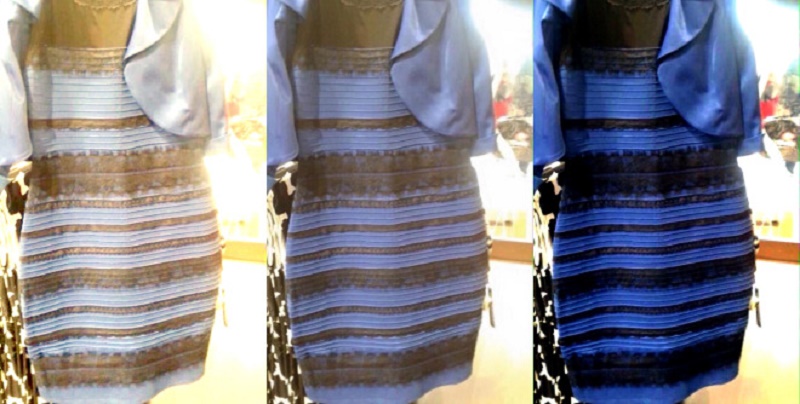
The mystery of the notorious blue and black-or gold and white-dress has been solved.
Last weekend, a photograph of the two-tone bodycon dress, made by British retailer Roman Originals, was first posted on Tumblr by a young woman named Caitlin McNeill under the username "swiked," who wrote that her friends couldn't agree on its colors.
"I was just looking for an answer because it was messing with my head," the 21-year-old singer and guitarist said.
Within hours, the picture went viral, with some insisting the dress is blue with black trim, other arguing it is white with gold trim. Politicians, scientists, and even celebrities-including Taylor Swift, Demi Lovato, Kim Kardashian and Justin Bieber-have weighed in-but still no consensus has been reached.
However, on Friday, scientists solved the mystery, revealing that the reason various people see different colors is because humans interpret the color of objects based on how they interpret the light around these objects-a fact experts call "trait color constancy." Thus, different people are interpreting the lighting in the photo in different ways, meaning their brains are tricking them into seeing the dress as different colors.
"What's happening here is your visual system is looking at this thing, and you're trying to discount the chromatic bias of the daylight axis," Bevil Conway, a neuroscientist who studies color and vision at Wellesley College, told the Wall Street Journal. "So people either discount the blue side, in which case they end up seeing white and gold, or discount the gold side, in which case they end up with blue and black."
Adds David Williams, Allyn Professor of Medical Optics and director of the Center for Visual Science, "The photograph does not have a lot of information about the nature of the illumination, and some people may see it as brightly illuminated and others less so. Hence the large variation in their reports of the colors of the dress."
"For example, if your brain decides that the dress is brightly illuminated, then it will also conclude that it must be made of darker fabrics such as blue and black. But if it decides the dress is only dimly illuminated, then it will also reach the conclusion that the dress reflects back a lot of the light falling on it. In that case, the dress must be made of more reflective fabrics light white and gold."
Additionally, nearly half of the human brain is devoted to processing visual information, and what the brain perceives as color is actually the result of five factors that are compounded together. Consequently, in the case of the dress, the first is the dress's material, including the pigments it contains and how much light it reflects. Once someone see the dress as one color, it's hard to "unsee" it and view it the other way.
"Our visual system is supposed to throw away information about the illuminant and extract information about the actual reflectance," says Jay Neitz, a neuroscientist at the University of Washington, told Wired. "But I've studied individual differences in color vision for 30 years, and this is one of the biggest individual differences I've ever seen."
As far as the actual color of the dress, the picture on the retailer's website makes the answer crystal clear: The dress is undeniably blue and black.














